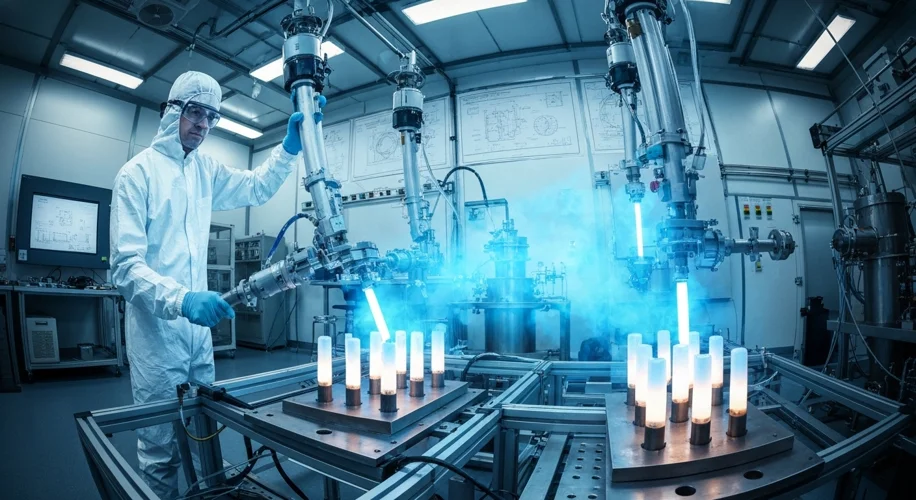The hum of nuclear reactors has long been a source of both immense power and profound anxiety. Since the dawn of the atomic age, managing the radioactive byproducts of this energy has been a daunting challenge, with early strategies focused on the unglamorous, yet critical, task of containment and long-term storage. But what if this so-called waste could be transformed, not just into something harmless, but into something incredibly valuable?
Imagine a future where the spent fuel rods, glowing with the residual energy of countless fission events, are not buried in the earth to be forgotten, but are instead meticulously processed. This is the tantalizing prospect at the heart of a revolutionary concept gaining traction in nuclear engineering: recycling nuclear waste to create rare hydrogen isotopes, potent fuels for the next generation of nuclear reactors.
This idea isn’t born from a vacuum. It’s the culmination of decades of intricate research and development in nuclear physics and engineering. Since the mid-20th century, scientists have grappled with the complexities of nuclear reactions, seeking ever more efficient and safer ways to harness atomic power. Early pioneers, working with bulky equipment and facing immense public scrutiny, laid the groundwork for understanding isotopic behavior and separation techniques.
The key lies in the very nature of nuclear waste. Spent fuel contains a cocktail of radioactive elements, including isotopes of uranium and plutonium, but critically, it can also contain tritium. Tritium, a heavy isotope of hydrogen, is a rare and highly sought-after component for certain types of advanced nuclear reactors, particularly fusion reactors. These future powerhouses, unlike the fission reactors we use today, promise even cleaner and more abundant energy, but they require a steady supply of tritium to initiate and sustain their reactions.
The challenge, however, is immense. Extracting tritium from the vast quantities of spent nuclear fuel, which is intensely radioactive and requires extreme handling precautions, is a monumental undertaking. It involves sophisticated chemical processes and remote handling technologies that push the boundaries of current engineering capabilities. Think of delicate surgical procedures performed by robotic arms, shielded by thick layers of lead and concrete, all to isolate a few precious atoms of a specific isotope.
Early efforts in the latter half of the 20th century focused on simpler reprocessing techniques, often aimed at recovering fissile materials like plutonium for weapons programs. However, with the growing imperative for sustainable energy and the development of advanced reactor designs, the focus has shifted. The concept of ‘closed fuel cycles,’ where spent fuel is reprocessed to recover valuable components and reduce waste volume, has evolved from a theoretical possibility to a tangible goal.
Consider the historical context: the Cold War era saw a massive investment in nuclear technology, driven by military imperatives. This led to the accumulation of significant stockpiles of spent fuel. As the geopolitical landscape shifted and the focus moved towards civilian energy production, the immense challenge of managing this legacy waste became increasingly apparent. Now, the paradigm is shifting again. Instead of merely storing this material, we are exploring ways to ‘mine’ it for its hidden potential.
Several countries, including the United States, have been exploring advanced fuel cycles and reprocessing technologies. The development of specialized facilities capable of handling and separating these radioactive isotopes is crucial. These facilities are not just buildings; they are bastions of precision engineering, designed to withstand and control the immense forces at play within the atom.
Imagine the intricate dance of science and engineering: chemists developing novel separation methods, physicists refining reactor designs to utilize tritium, and engineers building the robust infrastructure to make it all happen. It’s a multi-faceted challenge that requires collaboration across disciplines and a long-term vision.
The implications of successfully unlocking this potential are profound. It could significantly reduce the volume and radioactivity of long-term nuclear waste, easing the burden on storage facilities. More importantly, it could provide a sustainable and domestically sourced supply of tritium, accelerating the development of advanced nuclear reactors and contributing to a cleaner energy future. This would be a significant step away from the often-unpleasant necessity of permanent waste disposal and towards a circular economy for nuclear materials.
Of course, the path is not without its obstacles. The sheer radioactivity of spent fuel means that safety and security are paramount. The processes involved are complex and expensive, requiring significant investment. Furthermore, public perception and political will play a crucial role in the advancement of such technologies. Yet, the potential reward – a cleaner, more abundant energy future powered by materials we once considered only a burden – makes this a quest worthy of our deepest scientific and historical consideration.
As we stand on the cusp of potentially unlocking this new era of nuclear energy, it’s a testament to human ingenuity that we can look at something once deemed purely problematic and see a pathway to innovation and progress. The story of nuclear waste management is evolving, from a tale of containment to one of transformation, a narrative where the echoes of past technological endeavors might just fuel the dawn of a brighter future.

